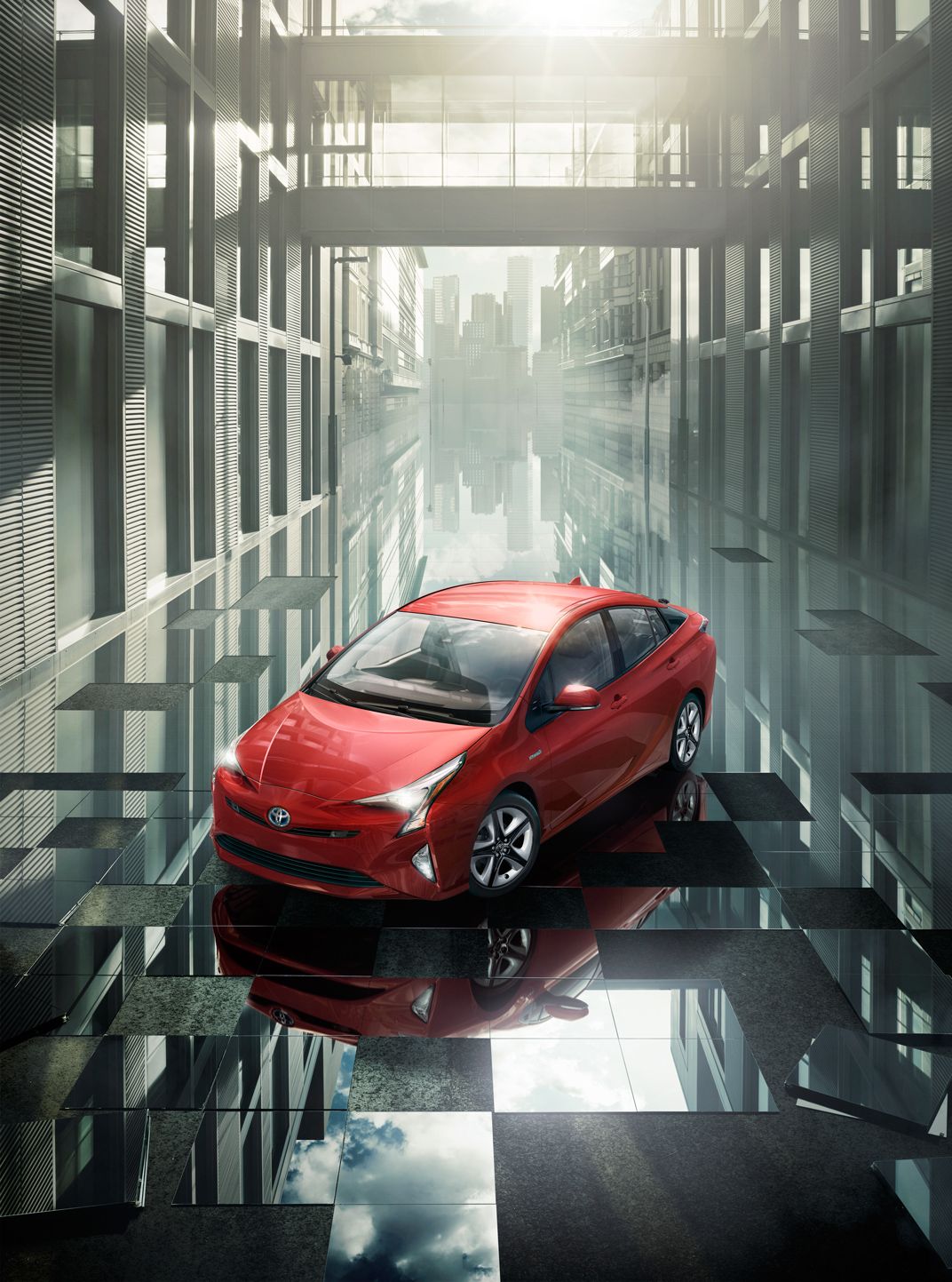For decades, new car buyers faced a few fairly simple choices: did they want a sexy sports car; cushy, comfortable luxury vehicle; or the boxy-but-safe family van? And then Toyota changed the rules of the road entirely with the introduction of the Prius—its cutting-edge gasoline/electric hybrid that made fuel efficiency practical, became an international best-seller and helped ignite the worldwide eco-friendly transportation movement.
Having established itself as the industry leader, what comes next? The answer is more innovation, and the future is already here—with the 2016 Toyota Prius. This newest version of the global green icon pushes the hybrid concept farther down the road than ever before, with design and technology breakthroughs that will delight the Prius faithful and turn the heads of those new to the game.
Designed to Move
Toyota’s design team took the image of a runner in the starting blocks as inspiration for the 2016 Prius design, and the result is a sporty profile that conveys a palpable sense of forward motion even when the car is in park. The “triangle silhouette” that defined the second- and third-generation Prius is now longer, sleeker and more athletic, with a lower hood and edgy character lines that run along the sides to accentuate the low stance. The exterior design of the 2016 Prius might be hard for the eye to resist, but it is resolutely easy on wind resistance, slicing through the air with a 0.24 coefficient of drag that is among the lowest of current passenger cars. Such sleekness does not come at the cost of compromised driver visibility, however. The views to the front, sides and back are now all bigger and wider, thanks to ingenious design adjustments such as larger and better positioned windows and mirrors. The new shape and location of the exterior folding side mirrors cut wind noise so you see more and hear less.
In fact, the all-new Prius is much quieter than the previous models. Its lighter, more efficient hybrid system and high-strength, lightweight body materials maximize noise control without harming fuel economy or performance.Throughout, the innovation of the fourth-generation interior design has been pushed forward, with functional features you’d expect in a Prius reimagined in fun and pleasing new ways. The wraparound dash features intuitive, readily reachable and easy to use controls. The form-hugging seats accommodate five comfortably.

Handles with Care
Of course, it’s only when you slide behind the wheel of a car that you truly know if you’ve met your match. And it is here, on the open road, that the 2016 Prius truly struts its stuff. The new platform introduces double-wishbone rear suspension. Combined with the vehicle’s low center of gravity, it delivers a highly responsive, smooth and pleasurable driving experience. Safety is not sacrificed for performance however, and the 2016 Prius will be among the first U.S. models to offer Toyota Safety SenseTM P (TSS-P)1, a new multi-feature advanced safety package anchored by a Pre-Collision System2 with Pedestrian Detection.3
Twenty years after its game-changing hybrid innovation, Toyota has again rewritten the rules of the road with the 2016 Prius. Take the future for a spin.
1Drivers should always be responsible for their own safe driving. Please always pay attention to your surroundings and drive safely. Depending on the conditions of roads, vehicles, weather, etc., the system(s) may not work as intended. Please see your Owner’s Manual for further details.
2The TSS Pre-Collision System is designed to help avoid or reduce the crash speed and damage in certain frontal collisions only. It is not a substitute for safe and attentive driving. System effectiveness depends on many factors, such as speed, driver input and road conditions. See Owner’s Manual for details.
3The Pedestrian Detection System is designed to detect the presence of a pedestrian ahead of the vehicle, to determine if impact with the pedestrian is imminent and to help reduce impact speed. It is not a substitute for safe and attentive driving. System effectiveness depends on many factors, such as speed, size and position of pedestrians, driver input and weather, light and road conditions. See Owner's Manual for details.
/https://tf-cmsv2-smithsonianmag-media.s3.amazonaws.com/filer/ba/e2/bae2c93a-9c51-4ce8-b01c-4a9015d156f5/prs-my16-0021-v001.jpg)